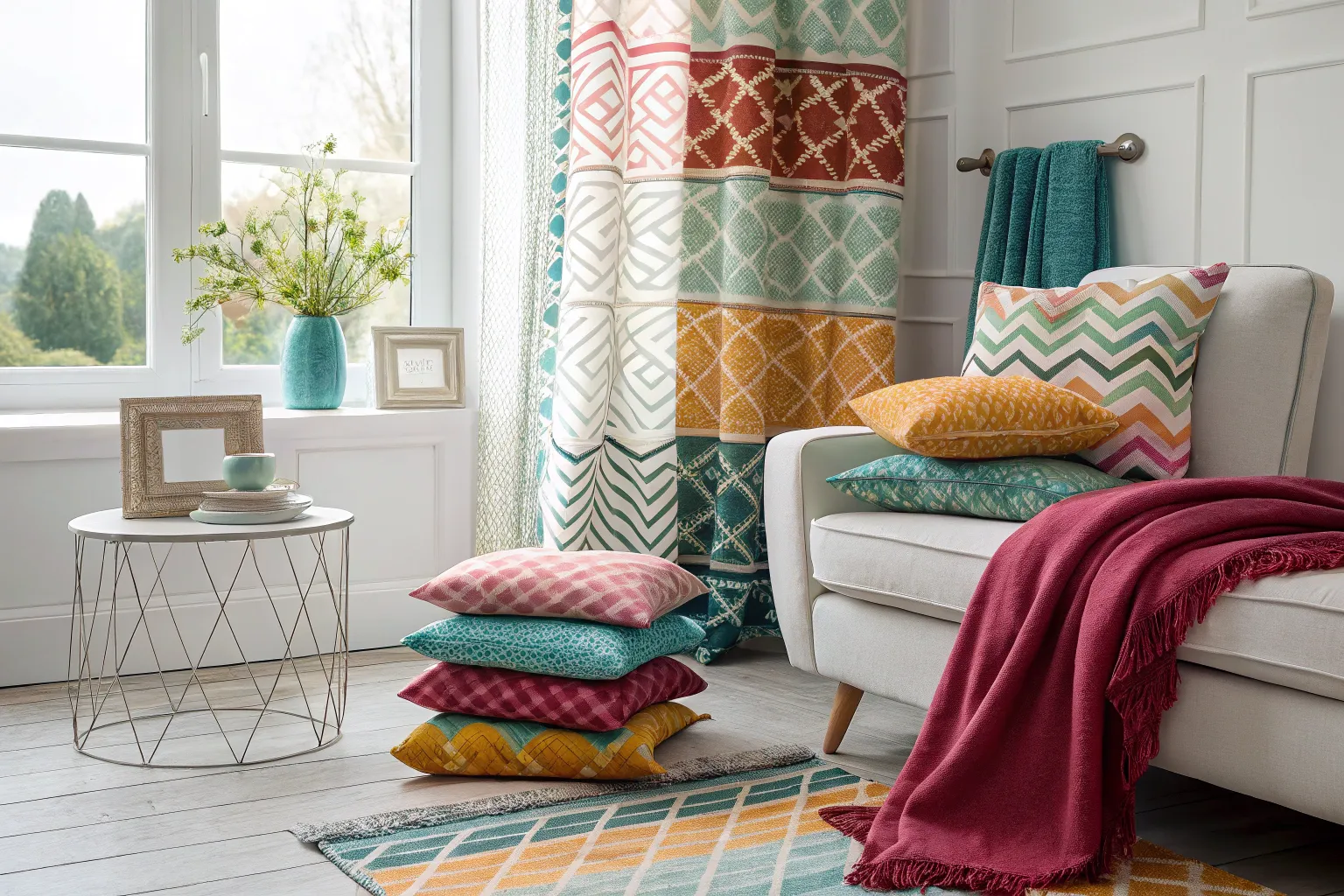A single fabric choice can transform an entire room from disjointed to harmonious. I’ve witnessed this transformation countless times throughout my career, and it never fails to inspire me how the right textile can serve as the unifying thread that pulls all design elements into perfect balance.
The Foundation: Starting with Your Anchor Fabric
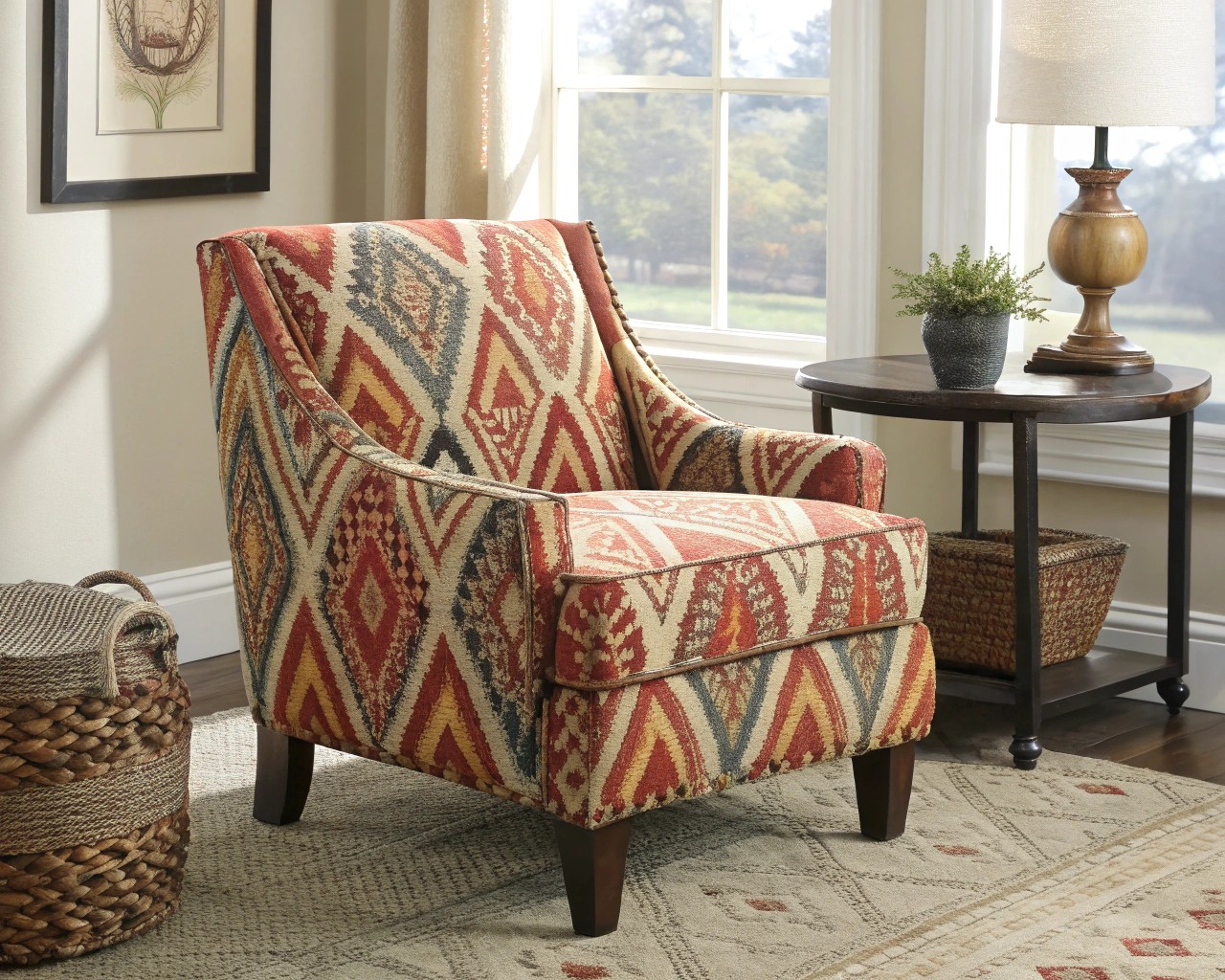
When I begin any interior design project, I always start with what I call the “anchor fabric”—that one textile that will serve as the cornerstone of the entire room’s design. This isn’t just any fabric; it’s the piece that speaks to you, the one that captures the exact mood and aesthetic you want to achieve. Think of it as the conductor of an orchestra, guiding every other design decision that follows.
Selecting Your Anchor Fabric
Your anchor fabric should be a textile that inspires you deeply and whose colors, patterns, and textures will guide your entire design palette. I often reserve this special fabric for smaller pieces like throw pillows, ottomans, or accent chairs, where it can make a statement without overwhelming the space. Here’s what makes an effective anchor fabric:
- Rich color palette: Look for fabrics containing 3-4 colors that you love
- Appropriate scale: The pattern should suit your room’s proportions
- Quality construction: This fabric will be your design foundation, so invest in durability
- Versatile character: It should work well with both bold and subtle companions
The Power of Fabric as a Focal Point
A well-chosen statement fabric can create an immediate focal point that draws the eye and anchors the entire room. When you select a fabric with bold patterns or arresting colors, it becomes more than decoration—it becomes a piece of art that sets the tone for everything else.
I particularly love using richly patterned velvets, bold florals, or textural fabrics in striking colors to create standout pieces that bring both color and visual interest to an interior. The key is positioning this fabric strategically where it will have maximum impact while still allowing other elements to complement rather than compete.
The Science of Fabric Unity: Color Theory in Practice
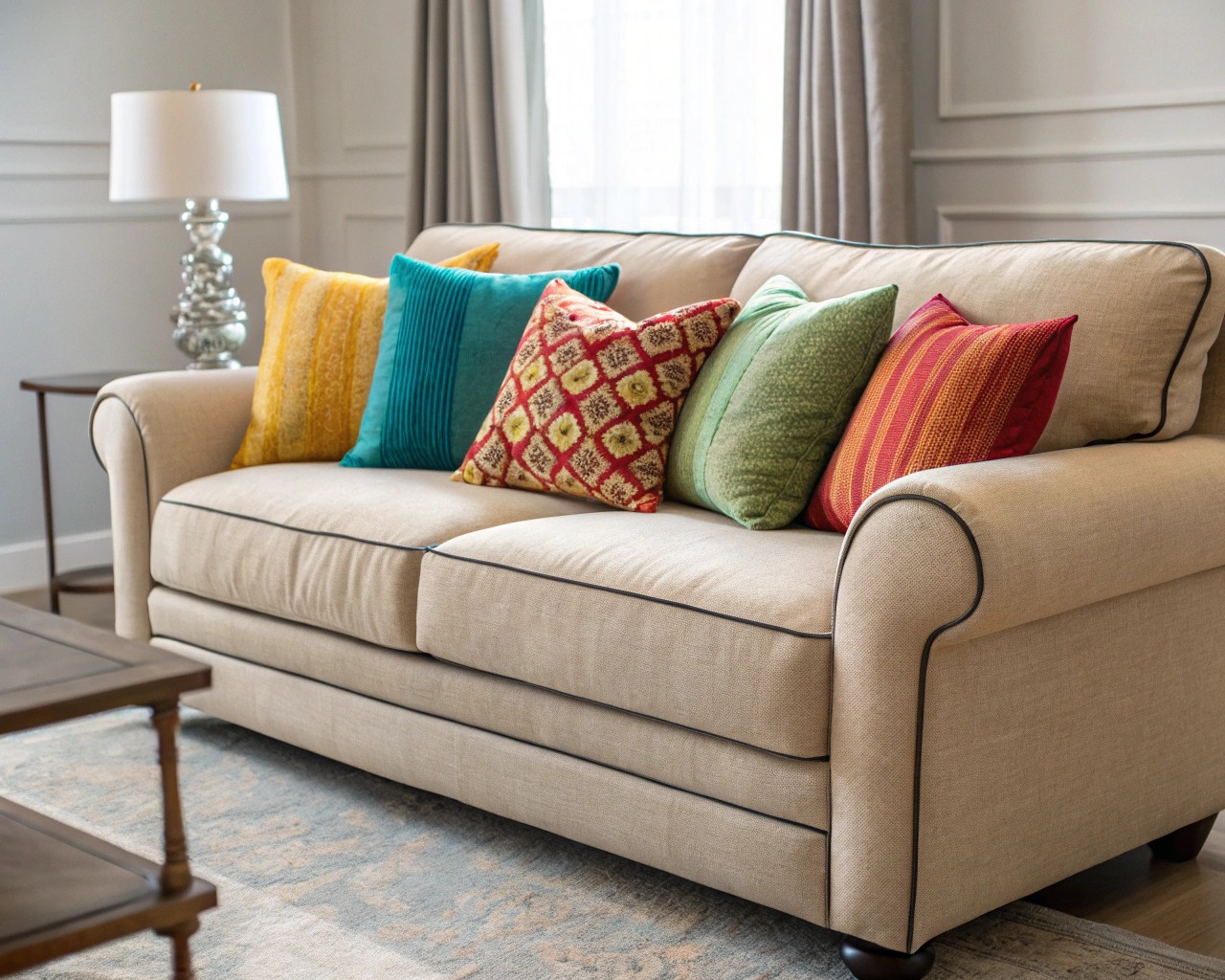
Understanding color theory is essential when using fabric to unify a room. The colors within your anchor fabric should serve as your complete palette, with each hue playing a specific role in the overall design.
The 60-30-10 Color Rule
I always apply this fundamental design principle when working with fabrics:
- 60% of the room should feature your dominant color (usually neutrals on walls and large furniture)
- 30% should showcase your secondary color (medium-sized furniture and accent pieces)
- 10% should highlight your accent color (pillows, artwork, and accessories)
Your anchor fabric beautifully demonstrates this balance, showing you exactly how these proportions should work together.
Color Temperature and Mood
The emotional impact of your fabric choice cannot be overstated. Cool tones like blues and grays create calming, serene environments, while warm tones like reds and yellows generate energy and coziness. When selecting your anchor fabric, consider the atmosphere you want to create:
- Calming retreat: Soft blues, greens, and cool neutrals
- Energetic space: Warm yellows, oranges, and vibrant accent colors
- Sophisticated ambiance: Rich jewel tones and deep neutrals
Creating Visual Harmony Through Scale and Proportion
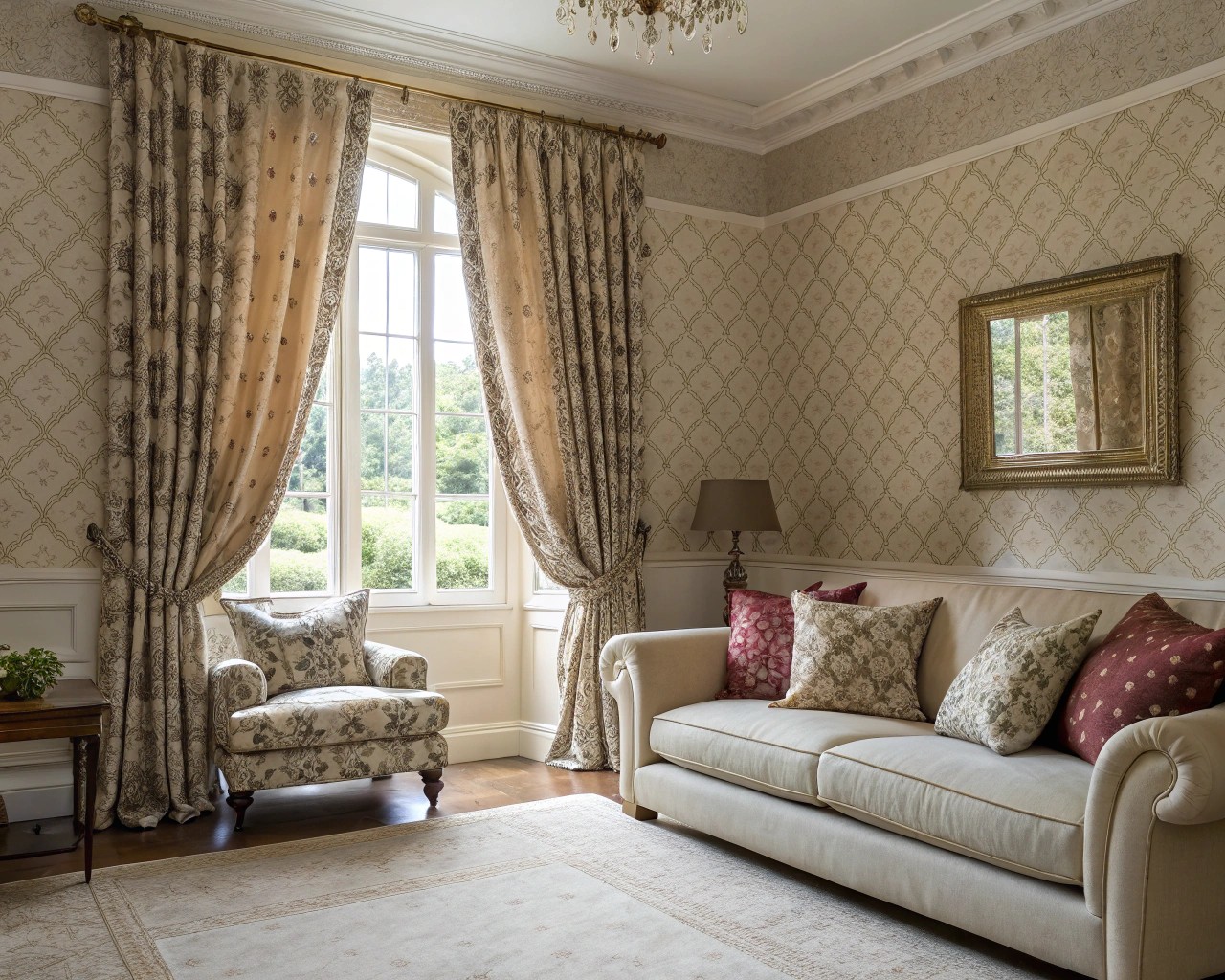
The relationship between different elements in your room must feel balanced and proportional. When using fabric to unify a space, understanding scale becomes crucial for achieving that professional, cohesive look.
Pattern Scale Guidelines
I follow these principles when layering patterns throughout a room:
- Large-scale patterns: Use sparingly for maximum impact (area rugs, statement curtains)
- Medium-scale patterns: Perfect for pillows, lampshades, and upholstery
- Small-scale patterns: Ideal for accent pieces and layering elements
The key is varying the scale while maintaining color continuity from your anchor fabric. This creates visual interest without overwhelming the space.
Balancing Visual Weight
Every fabric choice affects the visual weight of your room. Heavy, dark fabrics create more visual impact than light, airy ones. I balance these weights by:
- Pairing substantial fabrics with lighter companions
- Using texture to add interest without overwhelming color
- Distributing visual weight evenly throughout the space
The Art of Layering: Building Depth Through Textiles
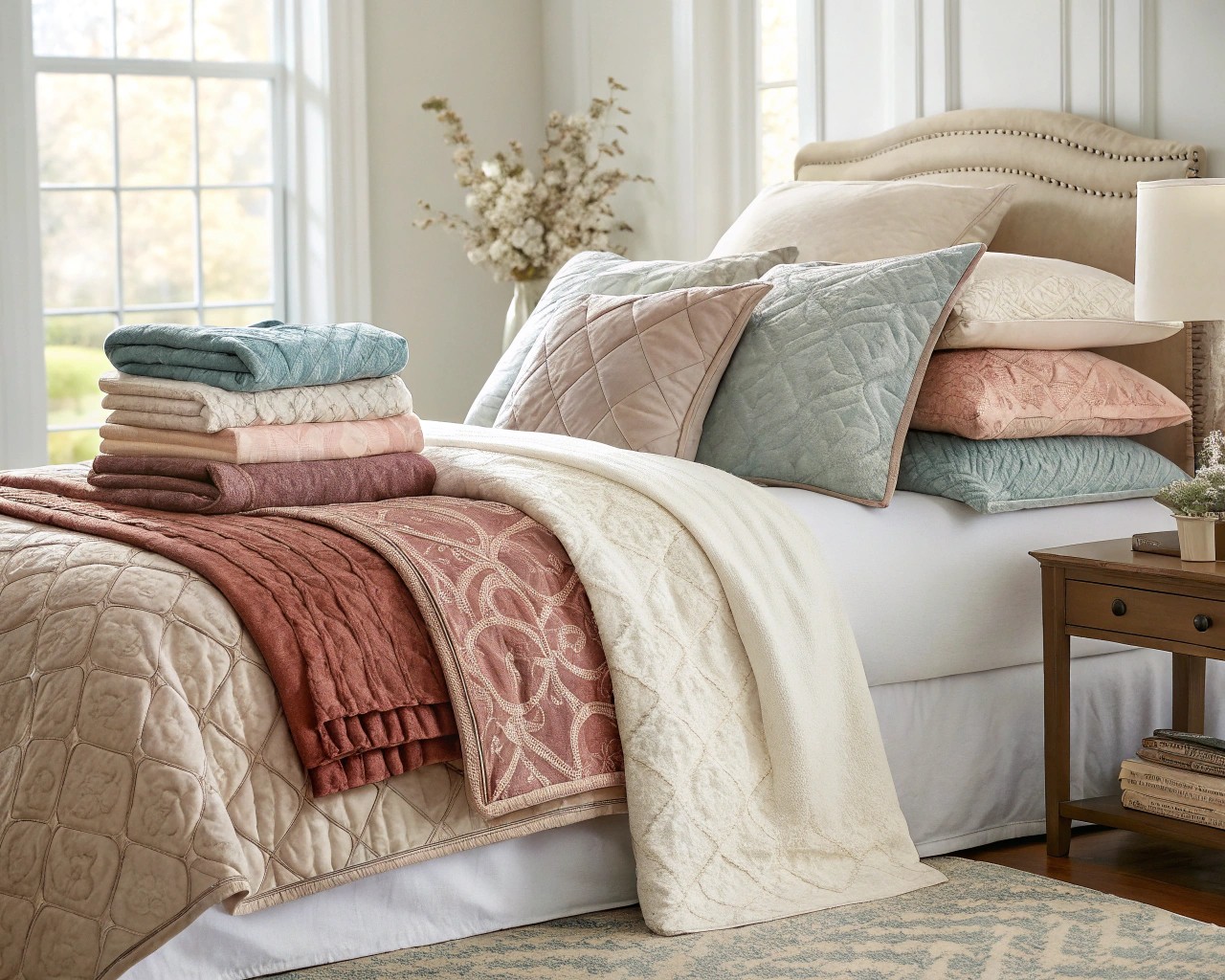
Layering different textures and fabrics creates the depth and richness that makes a room feel complete. This technique transforms a flat, one-dimensional space into a multi-sensory experience.
Strategic Texture Mixing
When layering fabrics, I combine different textures to create visual and tactile interest:
- Smooth textures: Silk, satin, and polished cotton for sophistication
- Rough textures: Jute, raw linen, and nubby weaves for earthiness
- Soft textures: Velvet, chenille, and plush fabrics for comfort
- Structured textures: Geometric weaves and crisp cottons for definition
Creating Visual Flow
The secret to successful layering is ensuring that colors from your anchor fabric appear throughout the room in varying intensities. This creates a visual flow that leads the eye around the space naturally. I achieve this by:
- Repeating the dominant color in different textures
- Using secondary colors in medium-sized pieces
- Incorporating accent colors in small, strategic doses
Practical Applications: Room-by-Room Strategies
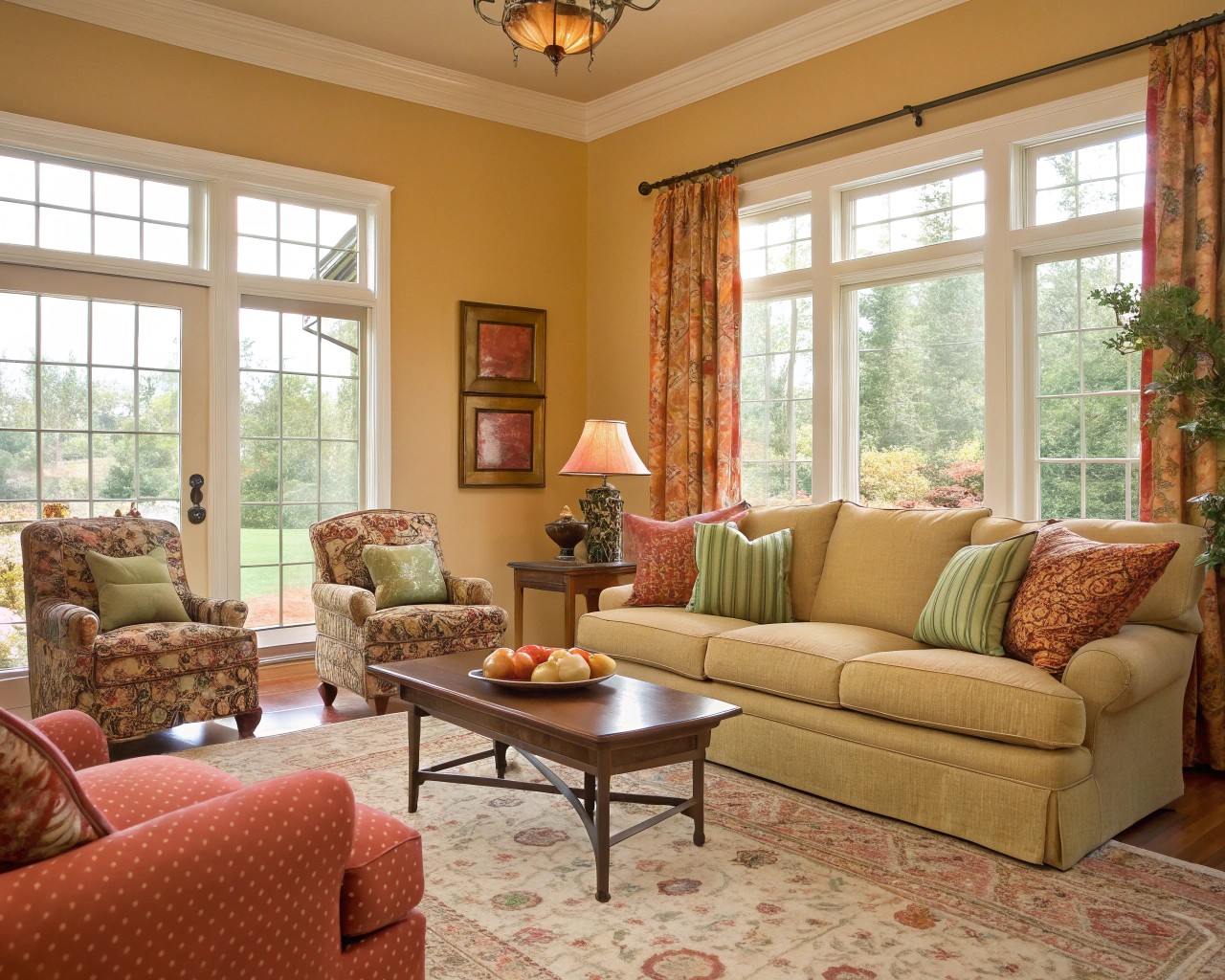
Living Rooms
In living spaces, I often use the anchor fabric for statement pillows on a neutral sofa, then echo its colors in curtains, area rugs, and artwork. This creates multiple touchpoints that tie the room together without overwhelming the space.
Bedrooms
For bedrooms, the anchor fabric might appear on a headboard or window treatments, with complementary colors carried through in bedding, accent pillows, and seating. The goal is creating a cocoon-like environment where every element feels intentional.
Dining Rooms
In dining areas, I might use the anchor fabric for chair upholstery or table linens, then repeat its colors in serving pieces, artwork, and window treatments. This creates an intimate, cohesive atmosphere perfect for entertaining.
Professional Techniques for Fabric Coordination
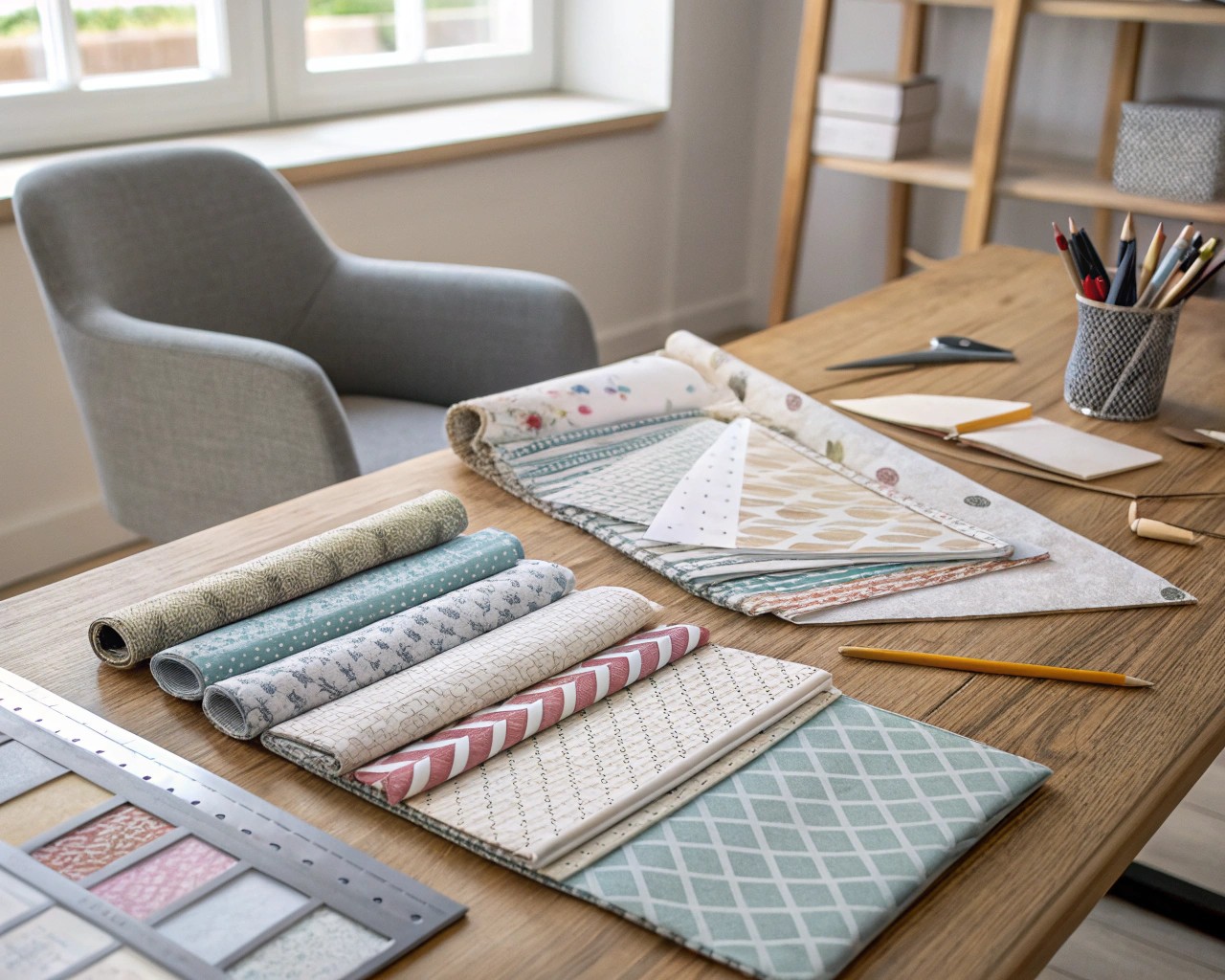
The Anchor Fabric Method
My proven approach to fabric coordination follows these steps:
- Select your inspiration fabric containing your ideal color palette
- Identify the dominant colors (typically 3-4 hues)
- Choose neutrals that complement these colors
- Add supporting fabrics in coordinating patterns and textures
- Layer strategically using the 60-30-10 rule
- Test combinations with samples before committing
Common Mistakes to Avoid
- Using too many competing patterns without a unifying element
- Ignoring scale relationships between different fabrics
- Choosing fabrics with clashing undertones
- Overwhelming the space with too much pattern or color
- Forgetting to consider lighting’s effect on fabric colors
Advanced Considerations: Lighting and Context
The way fabric appears in your room depends heavily on lighting conditions. Natural light reveals the truest colors, while artificial lighting can dramatically alter how fabrics look throughout the day. I always test fabric samples in the actual room under different lighting conditions before making final decisions.
Lighting Effects on Fabric
- Natural light: Shows colors most accurately
- Warm artificial light: Enhances warm tones, mutes cool ones
- Cool artificial light: Emphasizes cool tones, can wash out warm colors
- Directional lighting: Can create shadows that affect pattern perception
Creating Your Personal Style Through Fabric
The beauty of using fabric to unify a room lies in how it allows you to express your personality while maintaining design coherence. Whether you prefer bold, maximalist statements or subtle, understated elegance, the right fabric can serve as your personal signature while tying everything together.
Final Thoughts: The Transformative Power of Fabric
When you understand how to use fabric as a unifying element, you unlock the ability to create spaces that feel intentional, harmonious, and deeply personal. The key is choosing that one perfect anchor fabric and then building your entire design around its colors, patterns, and textures.
Remember, great design isn’t about following rules rigidly—it’s about understanding principles and then applying them creatively to achieve your vision. Start with that one fabric that speaks to you, and let it guide you toward creating a room that truly feels like home.
By mastering this approach, you’ll discover that fabric isn’t just decoration—it’s the very foundation that brings all your design elements together into one cohesive, beautiful whole.

